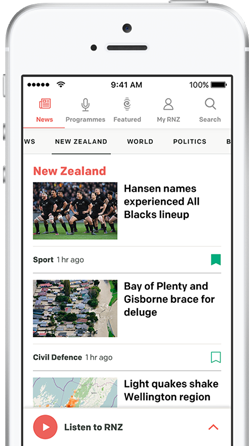
Kaipo Olsen-Baker of the Black Ferns clashes heads with Emily Chancellor of the Wallaroos. Photo: DAN HIMBRECHTS
Mouthguards that light up when a player sustains a significant head impact will be used at this year's women's Rugby World Cup, which starts next week.
The mouthguards, which use LED lights, will flash red if the impact is severe enough to potentially cause a concussion.
The referee will then stop play with the player sent off for a head injury assessment.
The mouthguards will be introduced to the men's Rugby Championship next year.

Waiaria Ellis sized up against Jorja Miller who scored a stellar try in the O’Reilly Cup, Black Ferns v Wallaroos match Photo: Kerry Marshall / www.photosport.nz
The technology was trialled in this year's Major League Rugby and is the latest version of "smart mouthguard".
World Rugby science and medical manager Dr Lindsay Starling said the new system was better than the current one, which uses Bluetooth to flag severe impacts.
Under the current system the alerts can take several seconds to reach the match day doctor.
"Match officials and players will be able to see that this player has sustained a big head impact because their mouth guard is flashing red," Starling said.
"It will create awareness about head injuries and concussions in the stands and for fans at home, being able to see it on TV."
Starling said the mouthguards would highlight moments of high impact within "split seconds".
World Rugby chief medical officer Dr Eanna Falvey said all but two players at the World Cup, who had braces, would wear the new mouthguards.
Starling believed the technology could also help identify instances of foul play.
"There is a world in which the data from the mouthguard can start to come into play a little bit more with foul play, but what everybody needs to understand that in the same way a player can get concussed from a pretty small head impact, foul play [can have occurred] without registering anything substantial," Starling said.
"What we need to be careful not to do is over-rely on the data or put too much power in the hands of the data. Data is incredibly powerful, but in this case the data might not tell 100 percent of the picture."
Sign up for Ngā Pitopito Kōrero, a daily newsletter curated by our editors and delivered straight to your inbox every weekday.







